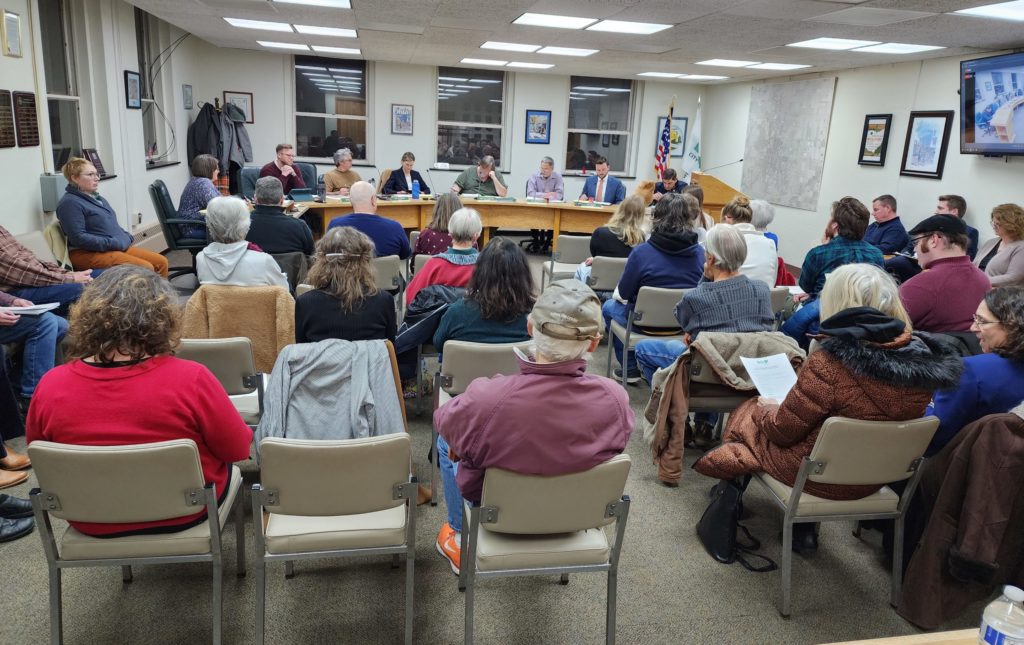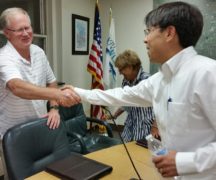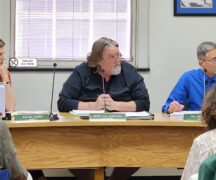By JAN LARSON McLAUGHLIN
BG Independent News
Bowling Green City Council heard from established older residents trying to preserve their neighborhoods, and new younger residents trying to find places to put down roots that aren’t rental units geared toward students.
In an effort to keep Monday’s meeting from dragging on like previous meetings on the proposed zoning code update, City Council President Mark Hollenbaugh limited members of the public to two minutes each at the podium.
The primary bone of contention continues to be the pedestrian residential zoning, proposed for the blocks running on each side of Main Street from Poe to Napoleon roads. The new zoning category would allow for some businesses in residential neighborhoods, and would allow for smaller lot frontages and setbacks.
Nearly 80% of the parcels in the proposed pedestrian residential zone already don’t meet the current lot frontage requirements. When the city’s GIS coordinator looked at the existing lot sizes, it was found that 1,745 of 2,226 lots are under the current 60-foot width requirement. Nearly 30% are less than the proposed 30-foot minimum.
But residents fear the new zoning will bring down property values, discourage owner-occupied homes, and disrupt quiet neighborhoods.

A couple citizens suggested City Council consider newer areas of the community for pedestrian residential zoning – rather than the older neighborhoods which are already walkable.
If city officials want to help the older neighborhoods, they could fix broken sidewalks and require landlords to maintain their rentals, said Rose Drain.
Joyce Kepke talked about her 20 years on City Council. She learned that in order to decide zoning issues, “I had to have some kind of standard for myself.”
Kepke would ask if the change would solve a problem, and if it was supported by the residents. The pedestrian residential is not supported, she said, suggesting that the area proposed for pedestrian residential instead remain R-2 residential zoning.
On the younger range on the age spectrum, Sam Morkal-Williams questioned the door hangers being hung by those opposing the proposed PR neighborhoods. The flyers state that the new zoning would drastically reduce lot sizes, immediately reduce home property values and deteriorate quality of life in the neighborhoods.
The materials being circulated are “tenuously connected to fact,” said Morkal-Williams, who lives on South Church Street.
“It’s very hard to find suitable quality housing in Bowling Green,” for young professionals, he said. “Where they can be valuable members of the community.”
Another young resident, Chris Humble-Mazzupappa, said she and her husband bought a home last year on South Enterprise Street, in Bowling Green.
“It’s difficult to find that starter home,” that’s not “scooped up by landlords,” she said.
The housing situation in Bowling Green does not promote long-term residency and investment by young people in homes. “If we continue to let all the homes become rentals,” that squeezes out first-time homebuyers, Humble-Mazzupappa said.
Joe DeMare cautioned that the pedestrian zoning is not right for Bowling Green.
“If you built it, they won’t necessarily come,” he said, pointing out the state of Woodland Mall on the north edge of the city.
Penny Evans-Meyer questioned if smaller lots, more businesses and more traffic make a neighborhood more livable. The new zoning category does not appear to respect historic buildings and natural areas, she said.
David Drain echoed the suggestion that the proposed pedestrian residential zoned area remain R-2.
“That’s the right thing to do morally,” he said, noting that people invest in property based on its zoning. “I expect you to keep that promise.”
Prior to the City Council meeting Monday evening, a work session was held to review other specifics in the zoning update. The Council Committee of the Whole talked about building setbacks and heights, lot coverage, artisan manufacturing sites, day care centers and dog parks.
Council member Rachel Phipps explained at the end of that meeting that once council is done fine-tuning the zoning update proposal, that a clean draft will be made. Community forums will be held, probably in February. Then council will put the issue on its formal agenda, she said.





